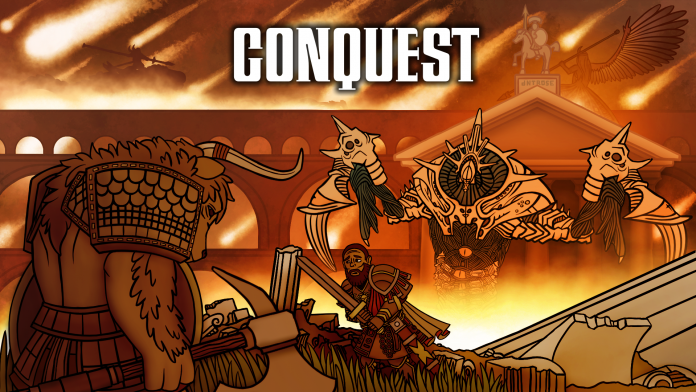Special thanks to Para Bellum for providing a significant amount of review material. If you want to get 10% off and support Goonhammer, make your Conquest purchase by clicking here for US/Canada or here for EU/rest of world and enter code “goonhammer” at checkout.
Para Bellum hasn’t shied away from drawing heavily on real world history when designing the armies of Conquest, whether they be Byzantine Old Dominion, 15th century European Hundred Kingdoms, or the twisted oligarchic monstrosities of the GOP inspiring the Spires. Now it’s time for Sparta, Corinth and Athens to get that treatment too. Behold: the City States!
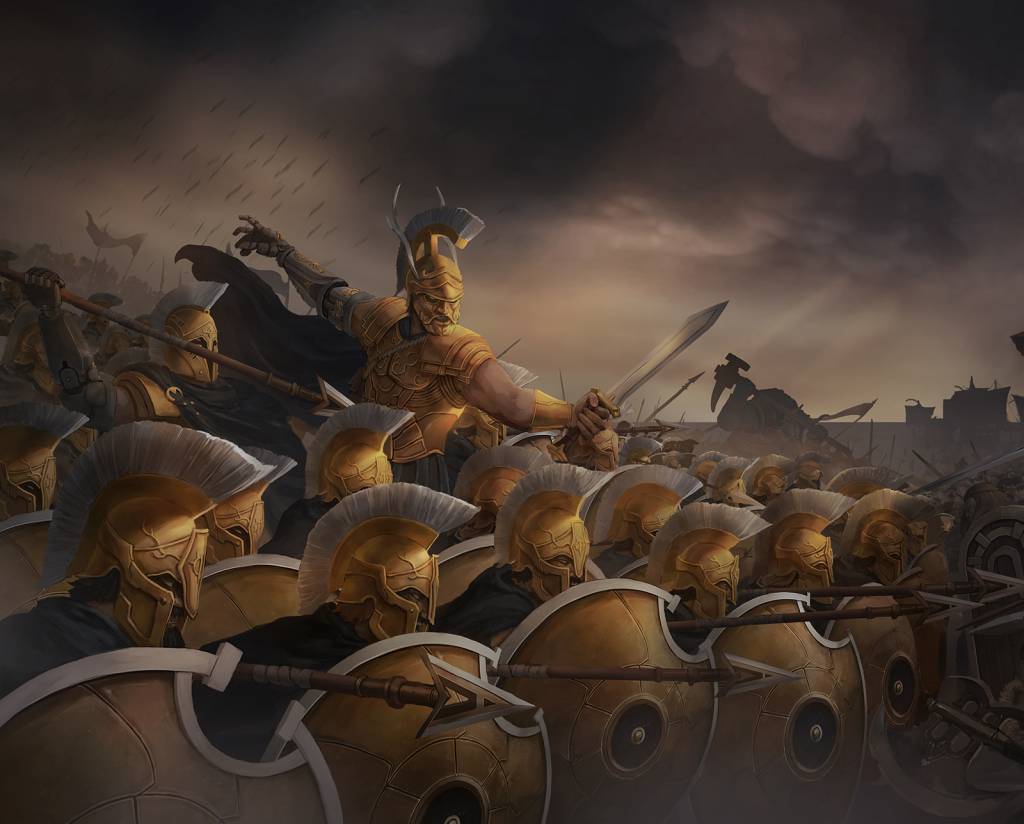
General Thoughts
If you’ve ever picked up a modern Games Workshop plastic kit, you’ll immediately be at home here. Para Bellum’s recent kits are joys to work with, hard grey plastic holding a wonderful amount of detail that probably puts the designers and machining somewhere on the podium of “great miniature creators”. Working in a larger scale than traditional 28mm-ish of most miniature games (including GW) means that you can get a great amount of detail on a model without making the mini feel crowded or overdetailed. A lot of GW models (particularly for AoS) are quite high contrast in their design, whereas Conquest models are quite elegantly sculpted with fine detail for realism. It can be harder for more stylistic and high contrast (and Contrast) painters such as myself, but you can do wonderful things with these models, particularly if you have an airbrush.
On the downside, a lot of City States models are tall, with spears and pikes in great abundance. This means that a gentle breeze or table wobble can send hoplites falling in all directions. It’s a bit annoying, but a problem that can be solved easily by sticking the models to their trays with blu-tak or similar, or, yknow, just gluing the models into the trays permanently. You’ll want to paint them individually, but gluing them down then basing afterwards might be a simple fix now that Conquest works off bases not models. For slightly more effort, I put a steel washer in each model’s base, and a little square of fridge magnet in each socket for both added weight and the wizardry of magnets. Remember that fridge magnetic sheets won’t stick to each other, so don’t glue that on both halves.
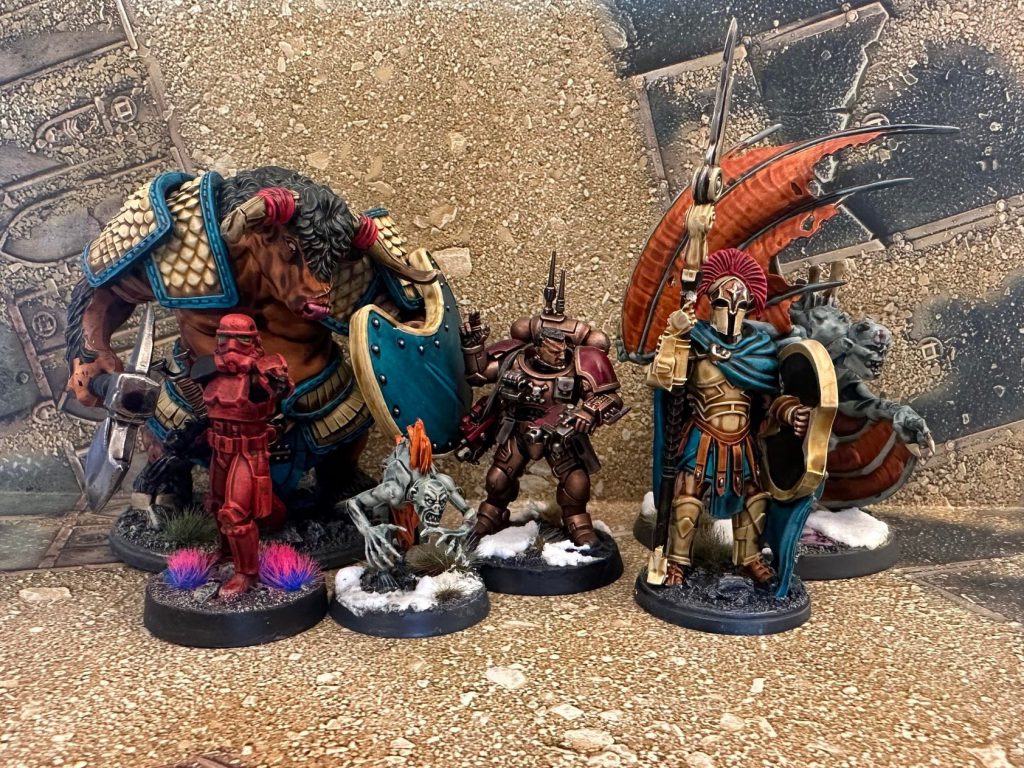
I didn’t really encounter mould lines on these kits, with the worst (but still minor) offenders being on the Hoplites’ boots. I’d still recommend going over them to be sure, but you’re not going to find much that needs trimming or filing here.
When you open these boxes, you’ll likely encounter a slip of paper where Para Bellum apologises for excess plastic on the sprues. I’ll be honest, I was on my third box of models before I worked out what they were saying sorry for, since everything had worked so cleanly. There’s a bunch of random little bits of flash on the sprues, which look kind of like overflow to my ignorant mind, but they never impacted my ability to clip the models off the sprue, and a lot had such tiny connections to the model itself that they didn’t need filing. To me, this speaks more about the integrity of Para Bellum that they were willing to point out even this truly minor issue rather than sweeping it under the rug (which they probably could have done, and most companies would have). I’m mumble mumble boxes of City States in, and I haven’t yet found any occasions where this issue impacted the model itself – at worst, it was a tiny bit of flash that came off without effort. This may be an issue on some boxes that I haven’t run into, but the quality control seems more than good enough to have caught anywhere this would’ve caused a problem.
Hoplites/Phalangites
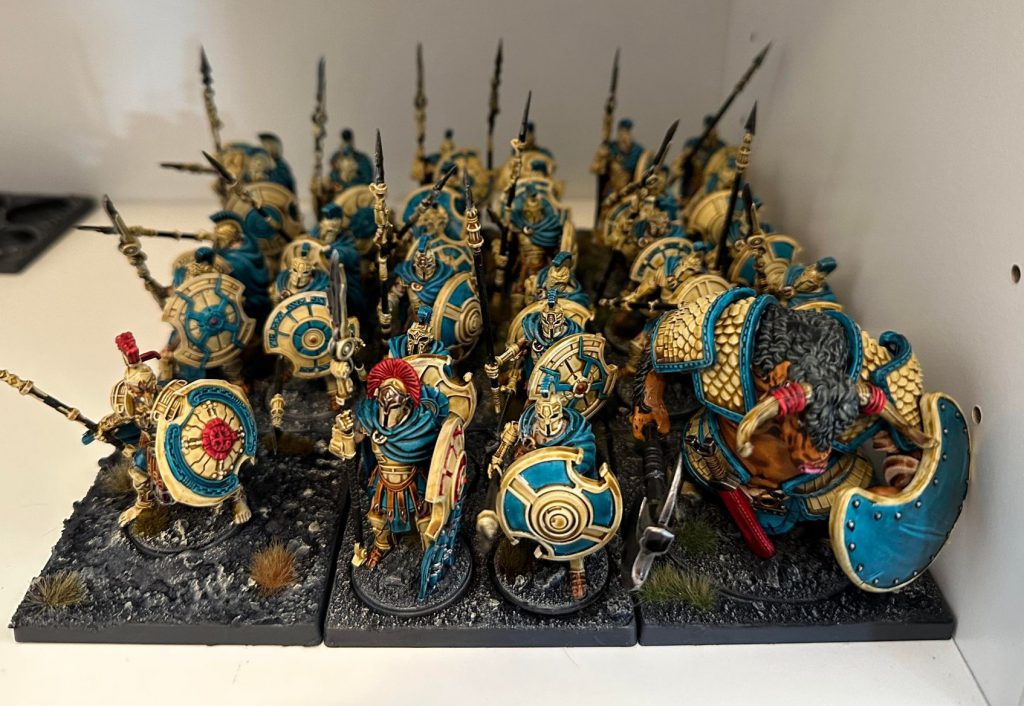
I only made hoplites out of these boxes, but everything below also applies to phalangites, the other half of this dual kit that basically just replaces the shield and spear with a single giant spear. Big shout out to this kit – each sprue makes four hoplites, and each piece is labelled with the number of the hoplite. If there’s no number, the bit can fit on any model. So, unlike some kits, you can truly snip out everything into a little pile, clean them up, and have no fear that you’ll have to test fit everything or go crawling through the instructions to find out which bit you’re holding. This massively speeds up construction; this is probably the fastest muti-piece infantry kit I’ve yet assembled. The models are largely monopose, but you’re doing blocks of ranked infantry so who really cares, and you can still get a lot of individuality by swapping around helms and shields, which aren’t tied to individual models.
The cloaks deserve a bit of a shout out here. Coming in two pieces, they’re assembled off the model, then almost snap into place on their matching hoplite. The joy here is that they don’t have to come as a part of it – the models look amazing without cloaks, and I’m kicking myself a little I assembled all mine the same way. The only issue I encountered assembling 15 stands of hoplites (60 models!) is the helmets.
The helmets are Not Great. If you assembled hoplites with cloaks, most helmets won’t fit on most hoplites – at the very least, not facing the same way as the model is intended. The crest on the top of the Corinthian helms dips back down to around shoulder level, which hits the cloak. This doesn’t appear to be connected to which helmets are specifically assigned to which models, but if it was I’d call that out as a bit of a bummer that a single piece fits a model where other accoutrements such as spears and shields can go on anyone. You do get more than sufficient helms for the four models on each sprue though, which is nice.
Full disclosure, I first wrote this review a full weeks ago, and included the phrase “the models rank up quite well”. This, dear reader, was a lie. I lied to myself. Ranking up these models can be miserable. Each stand can rank up decently, to an extent, but stacking these into big blocks can be pretty damn annoying, and even worse when it comes to trying to make contact with an enemy regiment. While one of the models (four, for the record) is entirely vertical, standing almost at attention, three are intended to have their spears at an angle, including a strong encouragement to put the spear through the cut out of the hoplon (shield). It’s possible to pose each hoplite with their spear pointed skywards, but given that the arms are designed to be facing forward with the spears braced, this can look a little… awkward. Having played a few games after assembling these, I can fully guarantee that the next hobby project I’ve got going is to rip off a bunch of arms and place them vertical – aesthetics just has to come second to practicality.
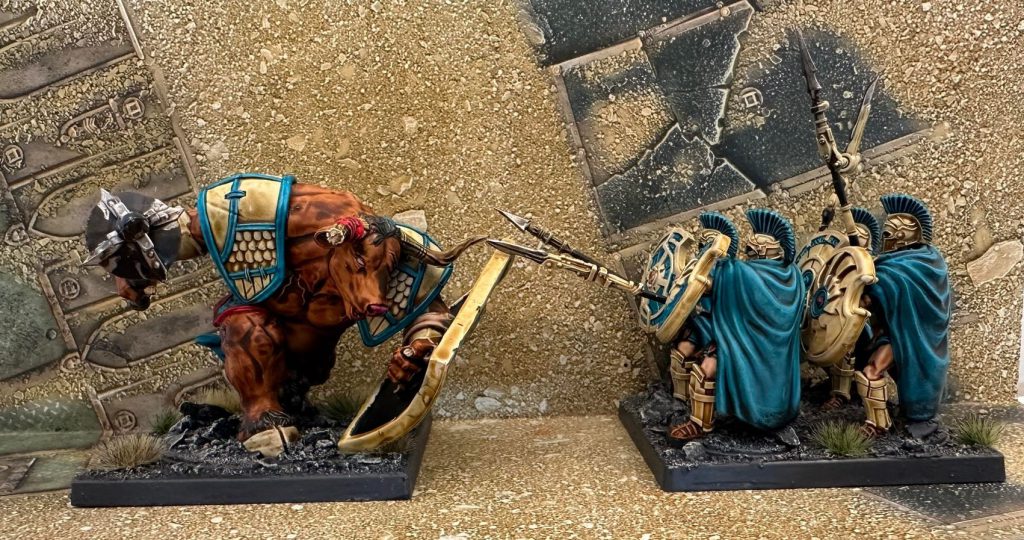
Fear not, gentle reader for all is not lost. You will want to rank up your models like the stand above, with spears facing towards the enemy and those behind bracing, points high, ready to support their brethren. The voice that is telling you this is the Bad Man, and you should ignore him. Instead, what you want to do is put those more static, non-combative models at the front of the stand, and the aggressive point forward models at the rear, to enable you to rank everyone up just right. Does it look as cool? Not really, no. Is it a massive quality of life improvement? Oh good Lord yes.
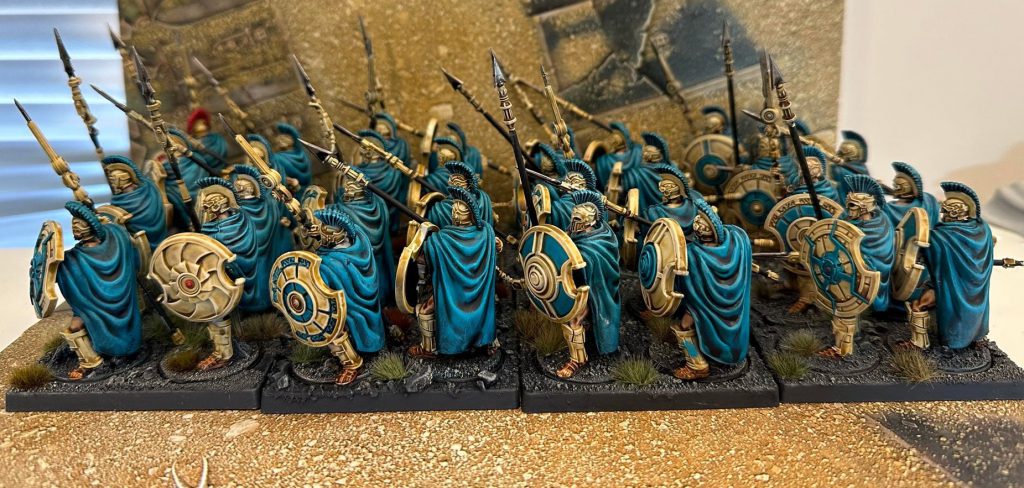
From a “cool model” perspective, these are the first hint I had that, uh, we have some cyborgs going on here. Every spear arm appears to be bionic, which is awesome. I love this, but it’s a shame there isn’t more of this going around.
I assembled mine with the shields before painting, and didn’t have any real problems getting to any parts of the model, but I was using a lot of Contrast rather than fine edge highlighting – your mileage may vary.
Minotaur Haspists/Thyreans
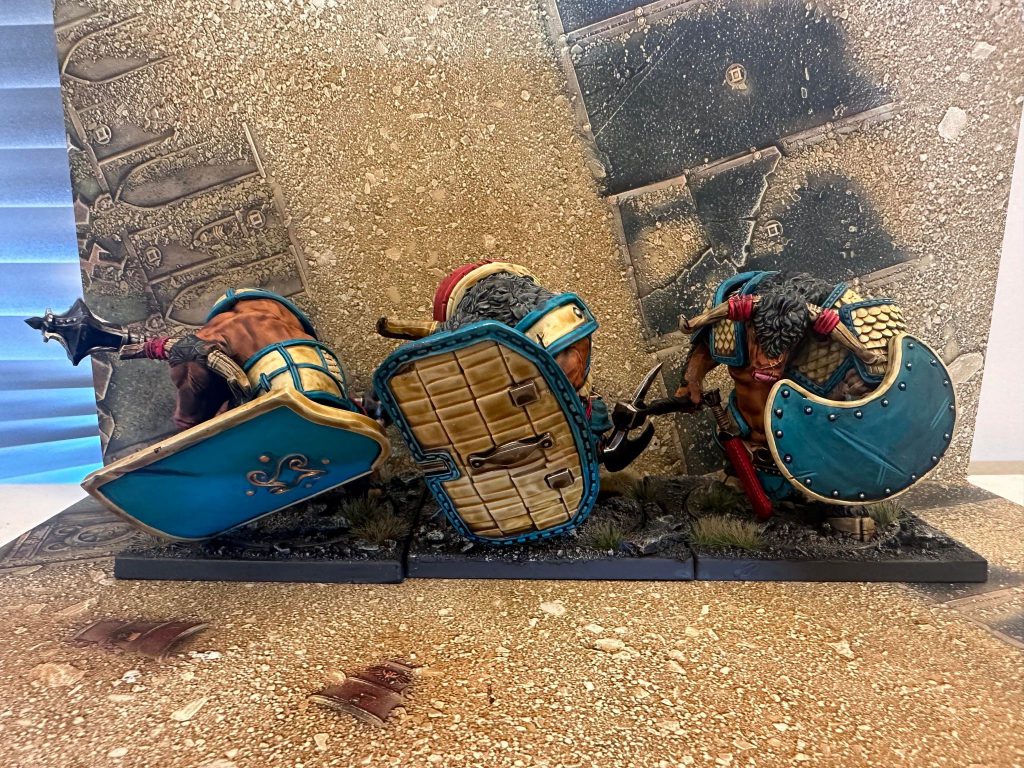
While the hoplite box was a joy to assemble, almost snapping together in places, the minotaurs were simply… fine. There’s nothing wrong about them, per se, but the level of detail is just slightly less than their smaller comrades in ways it’s a little hard to articulate – just a bit softer in some places. Don’t get me wrong, these models are still great, and nothing you’re going to notice from the tabletop, but I wouldn’t want to paint them as competition pieces. Honestly, massive shout out to the Para Bellum painters who made these models look amazing in their images.
Assembly wise, they’re very simple, largely just a couple of big body pieces and swapping around arms and, for some reason, a couple of armour pieces and heads. I’m not entirely sure why some armour pieces on the most heavily armoured minotaur needed to have different bits depending on if they’re haspists with shields or thyreans with giant weapons, because it didn’t seem to impact assembly at all. Heads were a bit more of a pain, with, annoyingly, no opportunity to swap heads around between different minotaurs. If you’re building one minotaur, that’s it, no kit bashing allowed. A couple of minotaurs gave me issues with the shoulder plates being challenging to slide on under the ear, or putting pressure on the head piece if that went on later, but nothing really meaningful.
Just like the hoplites, I struggled a bit ranking these guys up, especially if you choose to place them on the removable circular bases rather than taking complete advantage of the whole square base. The charging minotaur in particular posed a repeated issue in both haspist and thyrean builds, either because of his lowered horns or his very extended shield. I recommend keeping all minotaurs on the removeable bases to assist in ranking up against enemy units, either by pivoting them in their square, or removing the model entirely.
The minotaurs are the most “normal” models we’ve seen in the City States range, with not a bionic or weird science wizard trinket to be found. They’re almost classical in their design, and while that’s very well done, I would have liked a couple of hints in their miniature design that pointed to some of the incredible lore Para Bellum has created for their universe. Give me cyborg monsters!
Mechanist/Polemarch/Aristarch/
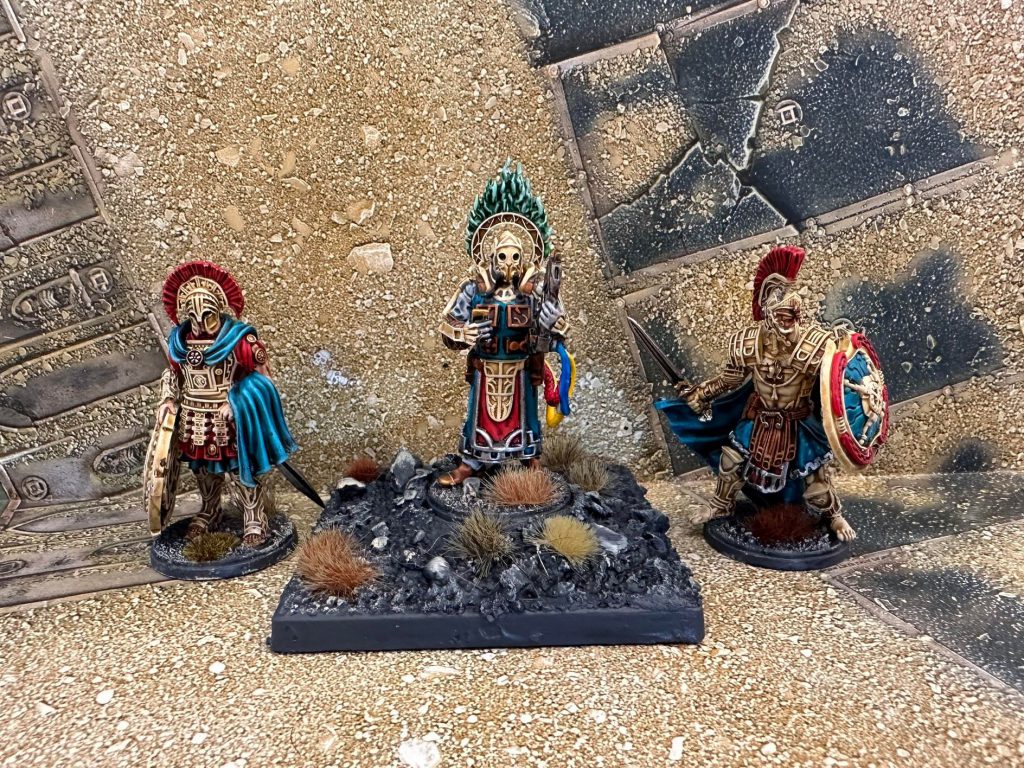
I’m going to lump these three in together because there isn’t much that needs saying – these models are beautiful, well cast and elegantly designed. The resin is incredibly crisp and I had zero problem with mould lines, gates, or any of the other ugly stuff that comes with a lot of resin models. As someone with several Forge World armies, I have an instinctive fear response to the word ‘resin’, but Para Bellum has taken great strides in breaking me of this; their models are great. The only excess resin I found on any of the four of these guys that I have is the occasional very, very thin bit of flash that comes off with the slightest touch – I think at most I gently used a toothbrush to remove some, and never had to resort to a hobby knife or file. Pay close attention to this step, because while it’s incredibly easy to remove once you spot it, I still found a few pieces during the painting stage that I missed.
The models are also remarkably sturdy for resin. I have two cats, so my Polemarchs have both been forced to experiment with gravity on both carpet and hard floors, and nothing’s broken, not even the spear. I know nothing about material science, but big ups to whatever company Para Bellum is using to cast these.
I think my favourite is the Polemarch, which can be assembled with either sword or spear, with a third sword wielding sculpt unique to the two player starter box. Most of the model appears to be bionic in some way, and there’s a lot of textures you can play around with while painting – I’m normally not one for picking out details like trim on the pteruges (the leather strips on the hoplites, phalangites and polemarch), but I gave it a try here. There’s a lot of armour on this fellow, and you can experiment with a lot of different colours, like Para Bellum did on their model. I stuck with a fairly simple ceramic look for most of my armour, which I think worked well.
The Mechanist is the only one of the three that’s a bit odd. I *think* the sort of bulbous upper limbs and head are a sort of vacuum sealed PPE suit, but it isn’t entirely clear, and it isn’t mentioned in the lore (we’ll get to that). The fire halo is fun, and also honestly optional; there are little sockets for it to slot in, but they’re subtle enough to just look like another weird bit of magitek. And yeah, that little nubbin on the top of the Mechanist’s abacus… thing? That’s meant to be there. It looks like a bit of gate left from resin casting, but it’s not. Don’t ask me if I worked this out before or after I finished the model…
Promethean/Hephaestian
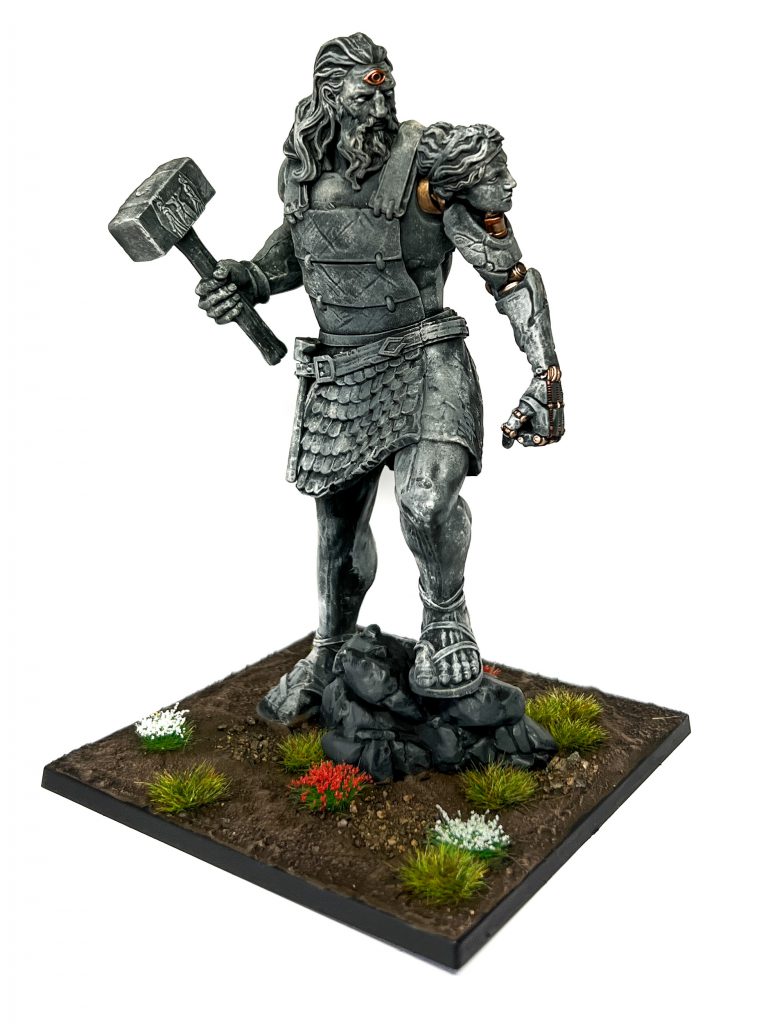
You can check out Bair’s views on the model here, along with how he painted his awesome stone giant.
I *adore* this kit. Coming in only two sprues, you’re getting a lot of model in not a lot of space. The head, arms, bits on the belt and spine are the only differences between the two models, but this doesn’t just look like an arm swap – the models look like different kits, sitting as they are unpainted on my desk right now. There’s… not a lot to talk about here. I love the fire and burning rock elements on the Hephaestian, and the stone prosthetic on the Promethean is just a great touch. They’re shockingly tall, but the scale and sculpting makes them look entirely related to the models crowding around their feet. You know how a lot of Warhammer 40,000 models, particularly vehicles, don’t entirely look as big as they feel they should? No worries about that here.
Also, if you’re ever lucky enough to check out these models in person at an event Para Bellum is at, check them out. I got to see them at Adepticon, and they’re incredible. The true metallics in particular are just outstanding and the artist deserves massive credit for the great work they did.
Wrapping up
Para Bellum aren’t the first to create a range of ancient Greek models, but damn they may just be the finest out there. The issues I found assembling and painting these kits (would love the cool lore more visibly integrated onto the models, ranking was a bit annoying, bigger models could do with more contrast in textures) are such tiny, tiny nitpicks that I feel almost guilty for raising them at all. The City States are my first army for Conquest, one I picked largely because there was enough local stock, but in building this force I fell in love. My historic love is typically a fair bit later than ancient Greece, but after this experience there’s been a sudden surge in ancient Greek paraphernalia making its way into my home.
One thing I’d love for future kits, which is more about how the game progresses more broadly, is to see more lore about each unit. Telling a story through model design is one thing, but it’s only part of the (literal) story, and I don’t quite thing the Living World stuff on the website is quite there yet. I loved the 1.5 edition fancy book with all the world building, and I’d love a new version of that tome just with lore and narrative in it.
The City States are the most obvious mapping of a real-world civilisation onto a game one that we’ve yet seen, but even that sentence does them a disservice. Almost every model has elements that reminds you of the sheer depth of Eä and the amount of work Para Bellum has put into their universe, game and models. This is a faction that will hold my attention and love, and hold pride of place on my painting table, for a long, long time.
Well, at least until the new W’adrhŭn dinosaurs arrive.
